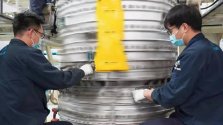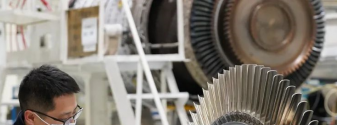Just did a quick check, D30KP2's compressor has 3 LP stages + 9 HP stages. Better fan + one additional LP compressor stage at the front and optimizing the rest of compressor/turbine design could significantly improve airflow & pressure ratio at the cost of lower bypass ratio and increased length. China in the late 2010s had better materials, cooling techniques and computing power than early 1970s USSR.
Between 2B1 and 5B3 variants, CFM56 saw a 50% increase in take-off thrust while keeping the same fan diameter by implementing improvements listed above (including an additional low LP compressor stage). One analysis on Zhihu suggests WS-20's latest public display model showed a technology level similar to that of CFM56-5B3. Applying similar level of technology to D30KP2 could see substantial increasing in thrust as D30KP2's technology was behind 2 series CFM56 to begin with (D30KP2's overall pressure ratio is at a very modest 20, compare that to about 30 for 2 series CFM56). They probably can't or don't want to increase WS-18's pressure ratio to CFM56-5B3 level (let's roll in the H-20 dumb bombs memes), but given the low base of D30KP2, I don't see why they can't get at least a 30% increase in thrust at the cost of increased length and decreased bypass.
Throwing in FADEC, and we'll have a modernized D30KP2 probably no worse than Russia's latest NK-32 variant. The original NK-32 already had a high overall pressure ratio at 28.4 so less room for improvements in that regard.
Development timeline wise, if full development for the improved WS-18 started in earnest in 2015 (after the first WS-18 model's project completion) and used only technologies developed for WS-20, I think it's possible for the new variant to be in flight testing by the time of Y-20 chief designer's interview in September 2021.
Also, the chief designer claimed the two engines under testing were results of self-led development (自主研制). It's questionable whether a close copy of D30KP2 could qualify as self-led development. A significantly improved variant just might. Not enough to prove anything. But a hint...
Anyway, not claiming twin engine H-20 is more likely than quad engine, what I'm suggesting is use scenarios, doctrinal/operational considerations should have been the deciding factors between twin engine and quad engine, not engine availability.


